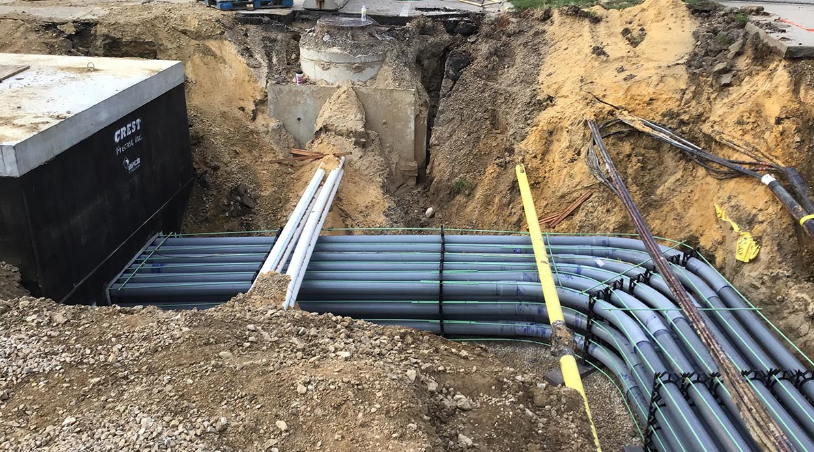Table of Contents
- Introduction to Site Utilities
- Importance of Proper Site Utility Management
- Key Components in Site Utilities
- Planning and Designing Your Site Utilities
- Implementing Effective Maintenance Strategies
- Leveraging Technology for Better Management
- Conclusion
Introduction to Site Utilities
Site utilities are an often overlooked but critical aspect of any construction project. This includes everything from water supply systems to electrical grids and internet connectivity. Ensuring these utilities are effectively managed is paramount for seamless project progression and enhanced safety. With proper site utility management, projects can achieve better efficiency and reliability.
A construction site functions effectively when all utilities are properly installed and maintained. Utilities like electricity, plumbing, and internet access are crucial in daily operations. Both small and large-scale projects benefit significantly from a structured approach to utility management. Proper site utility management can address potential issues before they escalate, saving time and costs. Effective management can also mitigate compliance and safety regulations risks, thereby safeguarding workers and the project.
Importance of Proper Site Utility Management
Effective management of site utilities can prevent delays and reduce costs. Properly handled utilities ensure compliance with local regulations and improve the overall quality and longevity of the construction site. According to a Forbes article, robust infrastructure management is key to achieving operational efficiency.
Moreover, when utilities are managed well, unexpected disruptions are minimized. Imagine a construction site suddenly losing power or having water supply issues. These kinds of setbacks can significantly delay the project timeline, leading to increased costs and frustration. Effective utility management also ensures the site adheres to environmental guidelines, minimizing the project’s ecological footprint. This attention to detail can elevate the overall quality of the construction work, boosting the project’s reputation.
Key Components in Site Utilities
- Water Supply Systems: Installing reliable water supply lines to meet the site’s needs. This includes ensuring that water quality and pressure are maintained according to standards.
- Electrical Systems: Ensuring stable and consistent electrical supply to avoid disruptions. It is crucial to have backup systems in place to handle emergencies.
- Internet Connectivity: Setting up robust networking solutions for seamless digital communication. In the modern age, uninterrupted connectivity is vital for project coordination.
- Sewage and Waste Management: Proper waste disposal systems to maintain hygiene and environmental standards. Efficient waste management can prevent health hazards and comply with local regulations.
Each component requires attention to detail during the planning and execution phases. Ignoring any element can have significant repercussions down the line. For instance, inadequate water supply can halt construction activities, while poor electrical systems can endanger lives. Therefore, incorporating expert advice during the setup phase is essential.
Planning and Designing Your Site Utilities
Effective planning is the bedrock of utility management. Begin by reviewing local zoning laws and ordinances. Involve multiple stakeholders in the design phase to cover all bases. Use Construction Dive’s tips for an efficient project management process.
During the planning phase, creating a comprehensive blueprint outlining all utilities’ placement is vital. This blueprint should be consulted throughout the project to ensure consistency and prevent missteps. Engaging with experts such as utility planners and engineers can provide invaluable insights into efficient design. Moreover, securing the necessary permits and aligning plans with local regulations can prevent legal complications in the future. This foresight ensures a smoother workflow, minimizing potential delays and cost overruns.
Implementing Effective Maintenance Strategies
Consistent maintenance after installation ensures the longevity and efficiency of utilities. Regular inspections, prompt repairs, and updating old systems are vital steps. Utility audits can also help identify areas for improvement and ensure that every component is functioning optimally.
Proactive maintenance is often more cost-effective than reactive repairs. Maintaining a regular schedule for inspections and upkeep can detect and resolve many potential issues before they escalate. This approach not only preserves the integrity of the utility systems but also extends their operational life. Moreover, documenting each maintenance task can provide a valuable record, aiding future decision-making and ensuring compliance with safety standards. This proactive stance reduces the likelihood of catastrophic failures and enhances the project’s overall reliability.
Leveraging Technology for Better Management
Modern technology offers numerous tools to enhance site utility management. From IoT-enabled sensors for real-time monitoring to advanced project management software, leveraging tech can streamline processes, reduce human errors, and optimize resource usage.
For instance, IoT sensors can monitor utility usage and detect anomalies, providing real-time data that helps make informed decisions. Such technologies can drastically reduce downtime and improve efficiency. Mobile applications and cloud-based platforms enable project managers to oversee utility functions remotely, providing greater flexibility and control. Adopting these technologies not only facilitates better management but also enhances the overall productivity and sustainability of the project.
Conclusion
Effective site utility management is a cornerstone of successful construction projects. By prioritizing planning, leveraging technology, and ensuring regular maintenance, you can pave the way for smoother, safer, and more efficient project execution, ultimately leading to sustained project success. Through diligent effort and advanced planning, the intricacies of site utilities can be mastered, thereby transforming potential challenges into opportunities for excellence.

